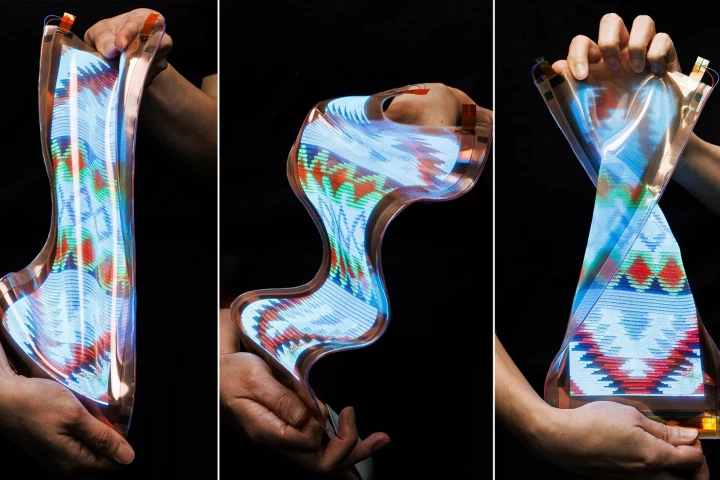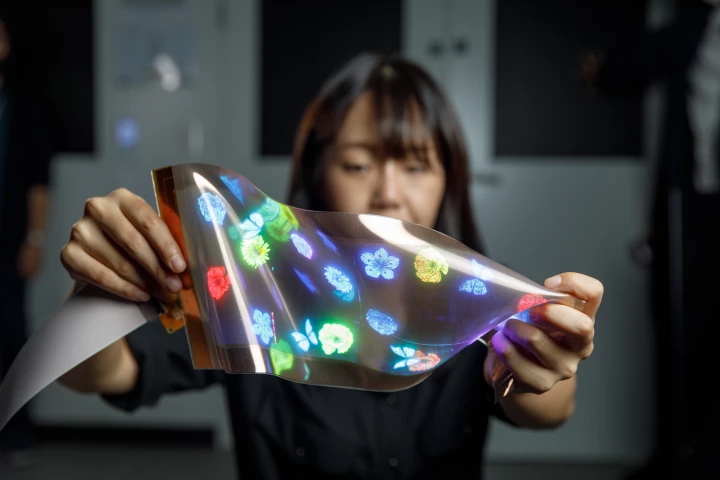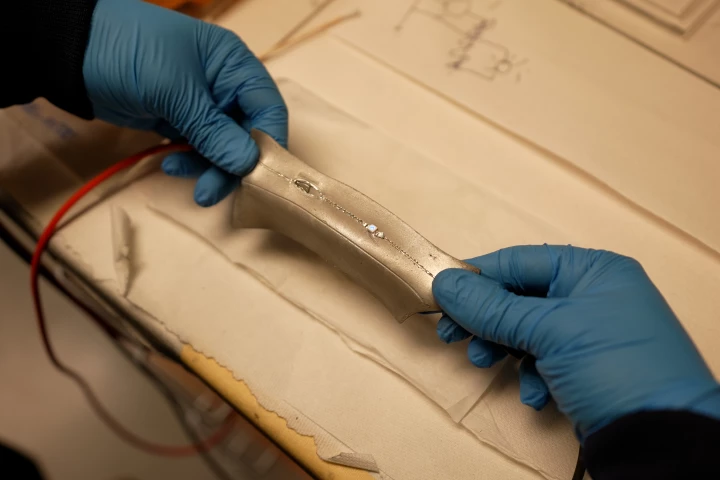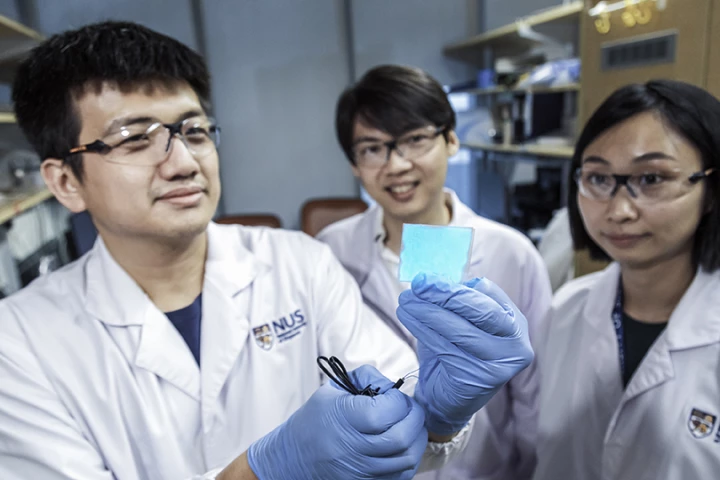Stretchable Electronics
-
LG Display has built on the technology powering its flexible screen prototype that stretched by 20% in 2022, announcing what's claimed to be the world's first stretchable display capable of expanding up to 50%.
-
Although we're hearing a lot about stretchable electronics, the fabrication of their components is far beyond most people's abilities. Now, however, scientists have created inks that let anyone draw stretchable LEDS using regular ballpoint pens.
-
Researchers have developed a mobile, noninvasive, ultrathin, stretchable, battery-operated electronic tattoo that simultaneously measures the heart’s electrical and mechanical activity, offering a new way of diagnosing and monitoring heart disease.
-
While the field of stretchable electronics does hold a lot of promise, joining the parts of such devices together can be tricky. A new connector is designed to help, as it stretches between the components plus it links them in a matter of seconds.
-
A team of researchers has developed a new material that’s not only elastic, but is impervious to gases and liquids – something this kind of material is usually bad at. The material could be useful for making flexible batteries or wearable electronics.
-
Foldable, rollable and bendable displays are beginning to appear in electronics, but now we’ve had a glimpse at a new take on the idea. LG Display has unveiled the first high-definition display that can be stretched, twisted and folded during use.
-
Although we do keep hearing about flexible wearable electronics, most such devices are still powered by rigid batteries that regularly need to be recharged. An experimental new battery, however, is soft, stretchable, and powered by human sweat.
-
Soft robots and flexible electronics aren't as protected as their rigid-shelled counterparts, so they're more likely to get ripped or punctured. A new stretchable, self-healing conductive material was designed with this limitation in mind.
-
Researchers from the Samsung Advanced Institute of Technology have developed a wearable health-monitoring system that's attached to a user's wrist, and can stretch by as much as 30 percent without affecting display or monitoring performance.
-
Although some tantalizing research is currently underway, we're still waiting to see stretchable electronic displays reach production. Well, scientists have now created one that can not only be stretched, but that also self-heals when damaged.
-
Engineers from North Carolina State University have developed a thin, stretchable electronic wearable sleeve that allows the user's skin to breathe, making for more comfortable long-term use as a biomedical sensor or human-machine interface.
-
Stretchable electronics that could be integrated into clothing are usually expensive to produce. But researchers at Michigan State University have used a plain old inkjet printer to make stretchy circuits that could form the basis of smart fabrics, deformable tablets and electronic wallpaper.
Load More











